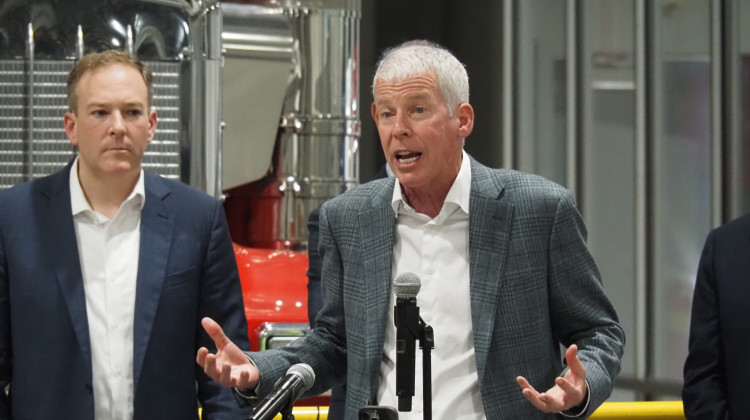Purdue researchers are investigating the viability of solar power production on farmland, hoping their work in so-called “aglectric” engineering will balance food and energy production.
Chemical engineering professor Rakesh Agrawal says merging the footprint of the two helps mitigate issues presented by a shortage of available empty land.
“The idea is to have energy at low cost, and plentiful everywhere,” Agrawal says. “So we get out of the fossils, and it will change the way we live.”
Professor of plant breeding and genetics Mitch Tuinstra says Indiana farmers might be able to make better, year-round use of their land.
“These barren fields, these open fields, around the city of West Lafayette, and how those could host solar arrays,” Tuinstra says. “But those are only open in the winter time, because crops don’t grow there in the winter time. There aren’t any open fields in the summer time, because they’re all being used by farmers.”
In a corn field northwest of campus, 56 solar panels are now posted in four tall rows, casting shadow on some of the corn below. They’re in two different formations, so scientists can gauge how the shade they produce affects the crops below. Agrawal says the panels take up a minimal amount of the space required for the crops, but the shadows could inhibit growth—an issue his research will address.
“So the crops have no detrimental issues,” Agrawal says. “So the crop yield is not—so we do not compromise it. That’s the main thing.”
Tuinstra says they’re studying corn now, but future fields could include soybeans or wheat.
“I wouldn’t be surprised if that whole field becomes the solar field, where we start implementing different types of technologies, and looking at—demonstrating—potential solutions to this challenge,” Tuinstra says.
Tuinstra says the first round of data collection on current plant growth and development will be complete by the end of August. The project has twice received funding from the National Science Foundation.
 DONATE
DONATE










 Support WFYI. We can't do it without you.
Support WFYI. We can't do it without you.